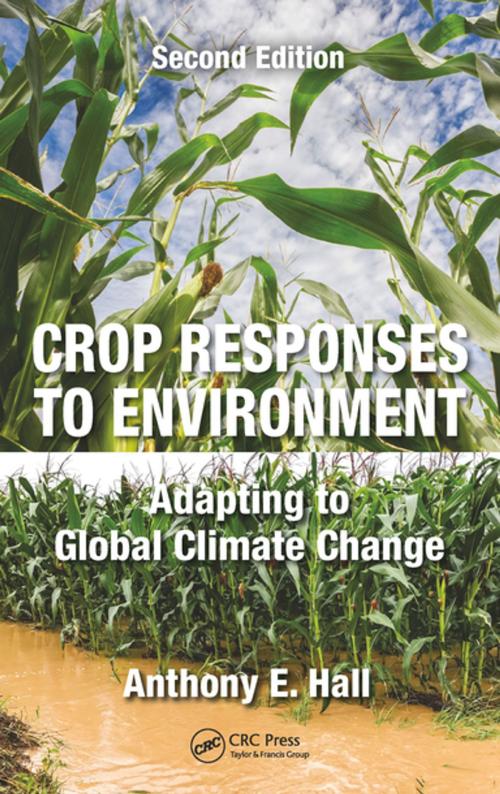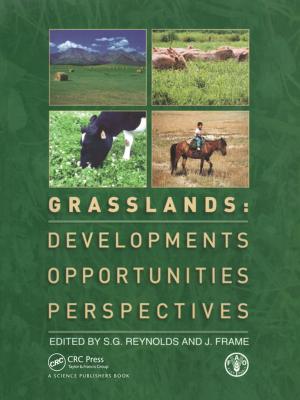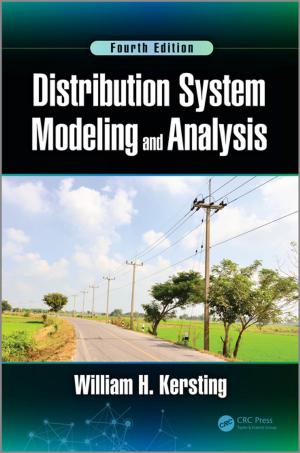Crop Responses to Environment
Adapting to Global Climate Change, Second Edition
Nonfiction, Science & Nature, Science, Biological Sciences, Botany, Technology, Agriculture & Animal Husbandry| Author: | Anthony E. Hall | ISBN: | 9781351377584 |
| Publisher: | CRC Press | Publication: | February 19, 2018 |
| Imprint: | CRC Press | Language: | English |
| Author: | Anthony E. Hall |
| ISBN: | 9781351377584 |
| Publisher: | CRC Press |
| Publication: | February 19, 2018 |
| Imprint: | CRC Press |
| Language: | English |
Following in the tradition of its predecessor, Crop Responses to Environment, this fully updated and more comprehensive second edition describes aspects of crop responses to environment that are particularly relevant to the development of improved crop cultivars and management methods on a global scale. It includes an extensive discussion of the difficulties in developing agricultural systems that accommodate increasing human needs for agricultural products during the twenty-first century in a sustainable manner. The book features new sections on adaptation to global climate change including adapting to global warming, elevated atmospheric carbon dioxide concentration, and increased flooding and salinity through plant breeding and changes in crop management. Warming effects include stressful effects of heat on pollen development and reduced winter chilling effects on fruit and nut trees.
The book examines principles, theories, mathematical models, and experimental observations concerning plant responses to environment that are relevant to the development of improved crop cultivars and management methods. It illustrates the importance of considering emergent plant properties as well as reductionist approaches to understanding plant function and adaptation. Plant physiological and developmental responses to light and temperature, and plant water relations are considered in detail.
Dr. Hall also describes climatic zone definitions based on temperature, rainfall, and evaporative demand in relation to plant adaptation and the prediction of crop water use. Irrigation management and crop responses to salinity, flooding and toxic levels of boron and aluminum are considered. Crop responses to pests and diseases as they interact with crop responses to physical and chemical aspects of the environment are examined. The book concludes with analyses illustrating the relevance of crop responses to environment to plant breeding.
Following in the tradition of its predecessor, Crop Responses to Environment, this fully updated and more comprehensive second edition describes aspects of crop responses to environment that are particularly relevant to the development of improved crop cultivars and management methods on a global scale. It includes an extensive discussion of the difficulties in developing agricultural systems that accommodate increasing human needs for agricultural products during the twenty-first century in a sustainable manner. The book features new sections on adaptation to global climate change including adapting to global warming, elevated atmospheric carbon dioxide concentration, and increased flooding and salinity through plant breeding and changes in crop management. Warming effects include stressful effects of heat on pollen development and reduced winter chilling effects on fruit and nut trees.
The book examines principles, theories, mathematical models, and experimental observations concerning plant responses to environment that are relevant to the development of improved crop cultivars and management methods. It illustrates the importance of considering emergent plant properties as well as reductionist approaches to understanding plant function and adaptation. Plant physiological and developmental responses to light and temperature, and plant water relations are considered in detail.
Dr. Hall also describes climatic zone definitions based on temperature, rainfall, and evaporative demand in relation to plant adaptation and the prediction of crop water use. Irrigation management and crop responses to salinity, flooding and toxic levels of boron and aluminum are considered. Crop responses to pests and diseases as they interact with crop responses to physical and chemical aspects of the environment are examined. The book concludes with analyses illustrating the relevance of crop responses to environment to plant breeding.















